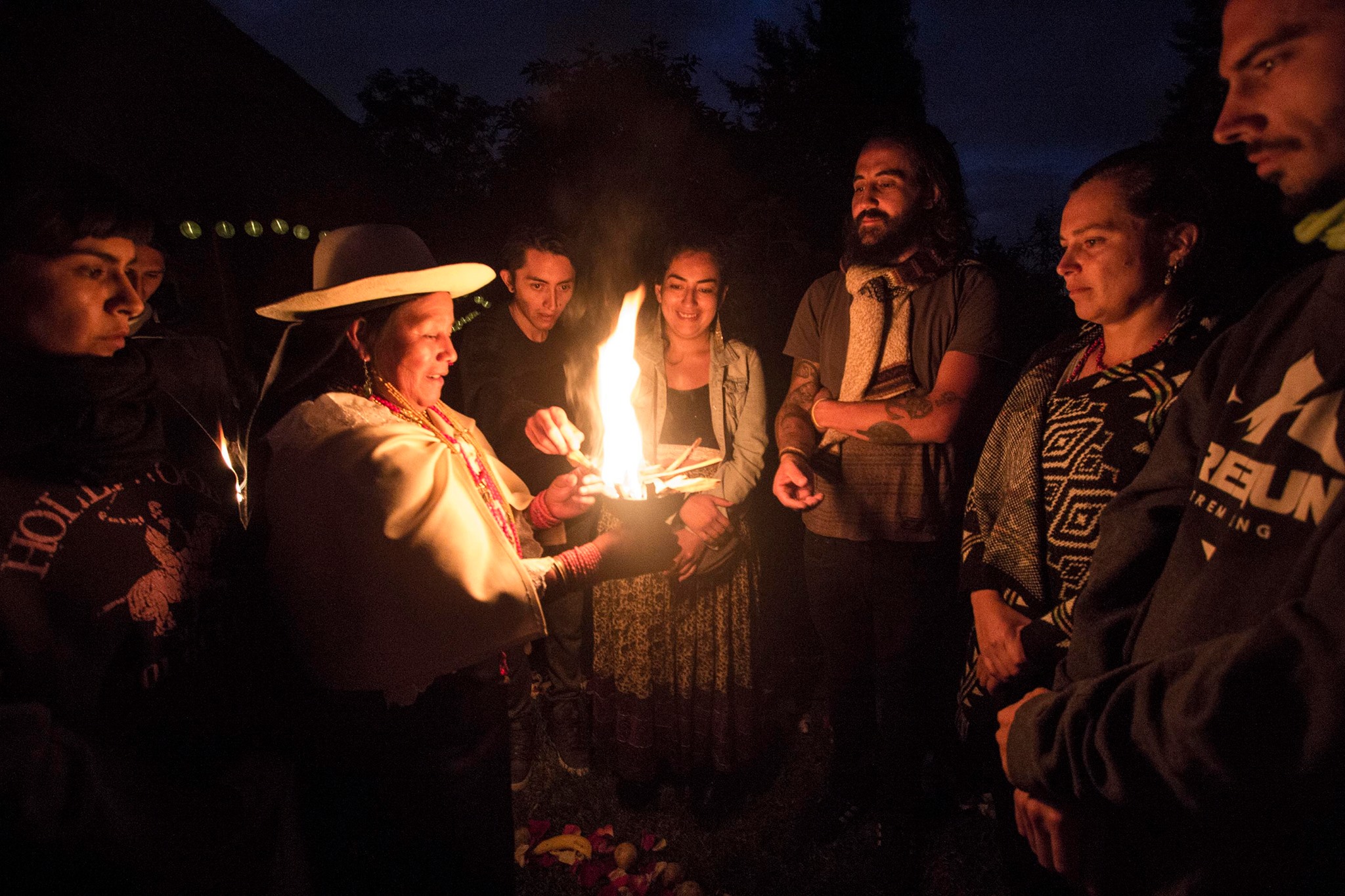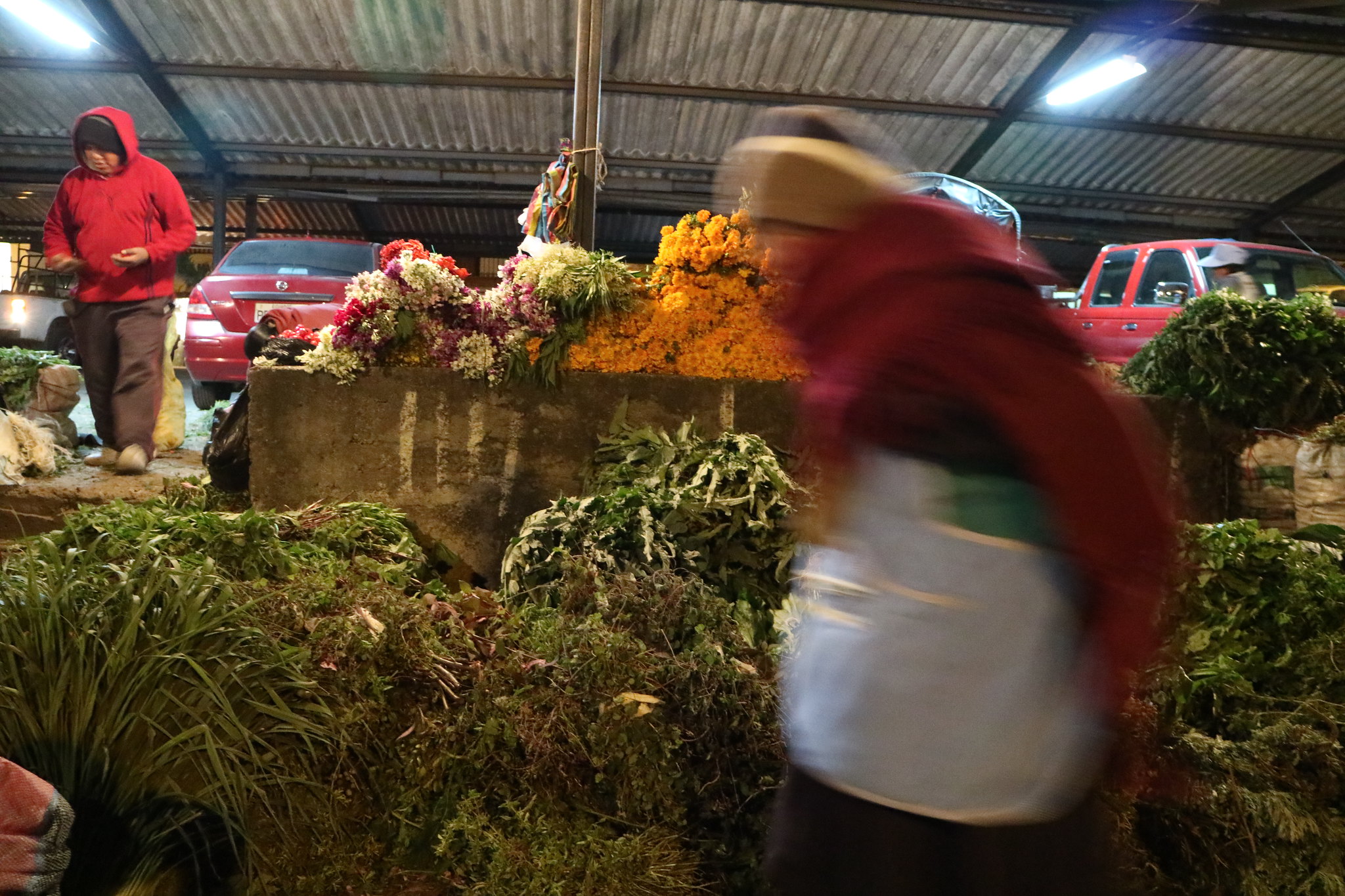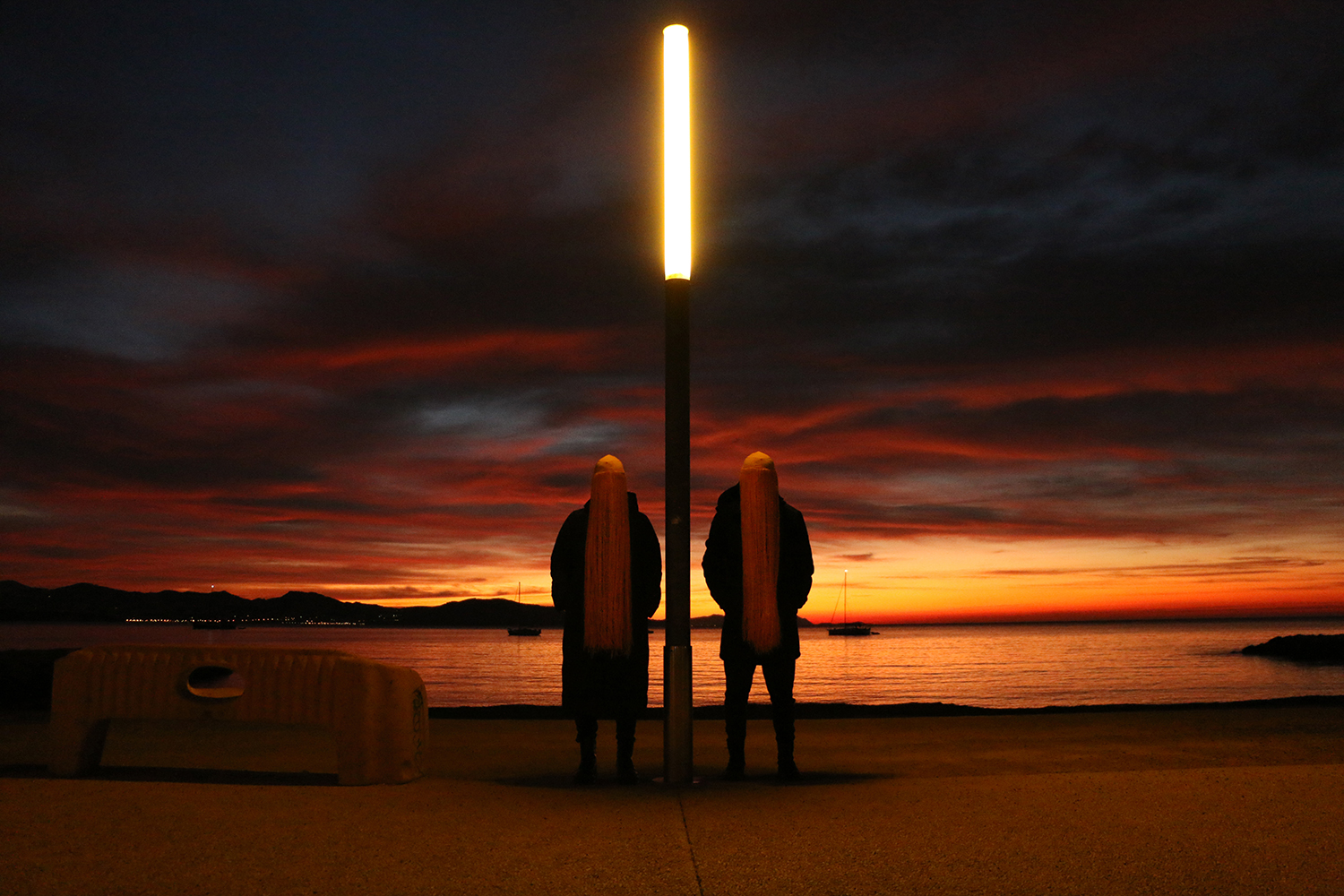Carolina Castro Jorquera: Let's talk about what brings us here. LA ESCUELA__ is a platform for radical learning that feeds on the continuous rotation of collaborating artists, researchers, and educators to address the question of the pedagogical role of art, or more specifically, how a school can be conceived, shaped, and activated through artistic practices. Last fall, you and Catarina Duncan participated as guest scholars. Can you speak about your role in the program?
Repairing, Re-situating and Rethinking What It Means to Be in the World
With the aim of fostering research-based and formative projects, Colombian curator and writer Sara Garzón (Bogota, 1988) participated as a Guest Scholar during LA ESCUELA___’s latest semester.
We talked with Sara about her interests in expanding curatorial practices that extend beyond exhibition-making, and as a site for the construction of collective knowledge through encouraging visual encounters. This conversation is an invitation to ask ourselves how artistic and curatorial practices help us repair, re-situate, and rethink what it means to be in the world.
Sara Garzón's practice is oriented toward ecocriticism and decolonial studies because, as she points out, "they open up spaces for us to think critically about the regimes of historicity underlying the analysis and examination of history, art and, of course, 'contemporaneity' as forms of artistic, cosmological and epistemological production."
Throughout this conversation, we opened up a space to discuss the relevance of orienting our practice toward a situated work that allows us to think about the ideas of community, politics, and ecology not as an abstract matter but as fieldwork, based on experiences and collaborative work.
Given the scenario of ecological and social crisis we are facing, it is necessary—as Sara suggests—to adopt a "critical stance towards art and the museum as hegemonic structures that have been accomplices of modernity in naturalizing duality as a universal ontological place, and from there, nurture the possibility of re-imagining art and institutions as spaces responsible for repairing those relationships."
This conversation is an invitation to ask ourselves how our artistic and curatorial practices are serving the task of repairing, re-situating and rethinking what it means to be in the world.
Sara Garzón: LA ESCUELA__'s invitation to participate as a guest scholar did not come with many parameters. It was a provocation to rhizomatically think around the legacies of art education in Latin America. For me, this invitation was a historical task. Considering the Emeritus section of the platform, it seemed interesting to imagine how, not only artists but also critics and curators, have had pedagogic roles. To this end, we invited art historian Katia González to write about Marta Traba's work on public television in Colombia, and Fabiana Serviddio to discuss the career of critic Jorge Romero Brest in Argentina. There is even an article on Joaquín Torres García's Escuela del Sur and his lectures on the radio in Uruguay. Together, the texts sketch out a very complex map of the actors and the media in which art education has taken place.
The realization that experimental art education throughout the last century deployed pedagogies for knowledge distribution in the public sphere led us to commission additional reflections around experimental spaces and unconventional classroom technologies today. That is why also during this semester many of the texts draw attention to artists, curators, and collectives that have had an impact in their creation of alternative schools.
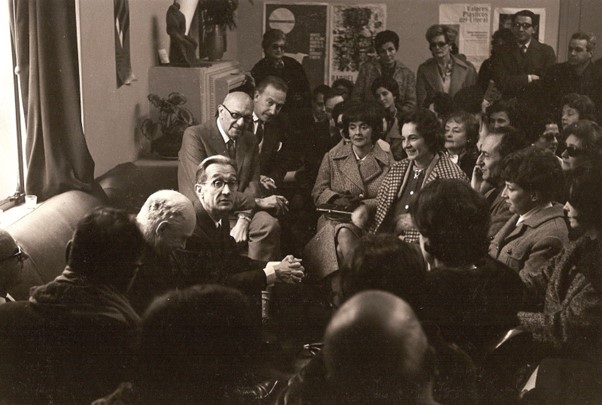
What you are saying makes me think about how art professionals become schools in and of themselves—most of whom without formal training in arts education disseminate their innovative artistic thoughts through informal gatherings and self-initiated programs.
You are right. A testament to that is the EspIRA La Espora residency program led by artist Patricia Belli in Nicaragua. This artist residency became a school of sorts giving way to continued education through seminars and theoretical workshops mostly attended by artists in Central America who craved this kind of regional exchange. Inspired by EspIRA La Espora and other like-minded efforts, we dedicated this semester to better understanding the spaces that today while operating at the margins of academia have been foundational in broadening the reach and possibilities afforded by art.
We thought of exercises carried out by collectives across urban and rural areas that are seeking ways to materialize alternative educational structures. In the text by Chilean curator Natalia Arcos, for example, she delineated how alternative structures of knowledge production established by the Zapatistas around art questions the value of the sensible in their construction of an ontology rooted in the defense of their territory, which in turn, produces situated political thinking.
You have directed your curatorial practice very specifically towards contemporary Latin American art, decolonial theory, and temporality. I would like you to tell us how you perceive the pedagogical work of a curator?
The pedagogical task of the curator is implicit within the critical and historical work we do. In particular I like to generate spaces to help us address questions that intertwine art and visual theory. I think of ways of potentializing the exhibition space around the construction of collective knowledge and the development of meaning through shared acts of seeing.
The most recent example of this was the program I guest-curated for Materia Abierta, which is an experimental school of art and technology. Titled: “The Rise of the Coyote,” the aim of the program was to investigate the intersections between temporality, plant intelligence, and Indigenous technologies. Exploring these questions within Materia Abierta's educational framework, which included seminars, lectures, and field visits with artists, theorists, and activists, changed the nature of what curating could entail beyond an exhibition-based practice. The most important part of “The Rise of the Coyote” was thinking about situated forms of collaborative learning. This meant helping each other learn how to root our thinking and, thus, see the profound transformations that are occasioned by fostering an embodied consciousness. Through these exercises we opened up the possibility of thinking about community, art, and ecology in ways that rejected the disembodied seeing that is repeatedly enacted in exhibition spaces. Instead, we aimed for constructing meaning that was rooted in the body and in the earth.
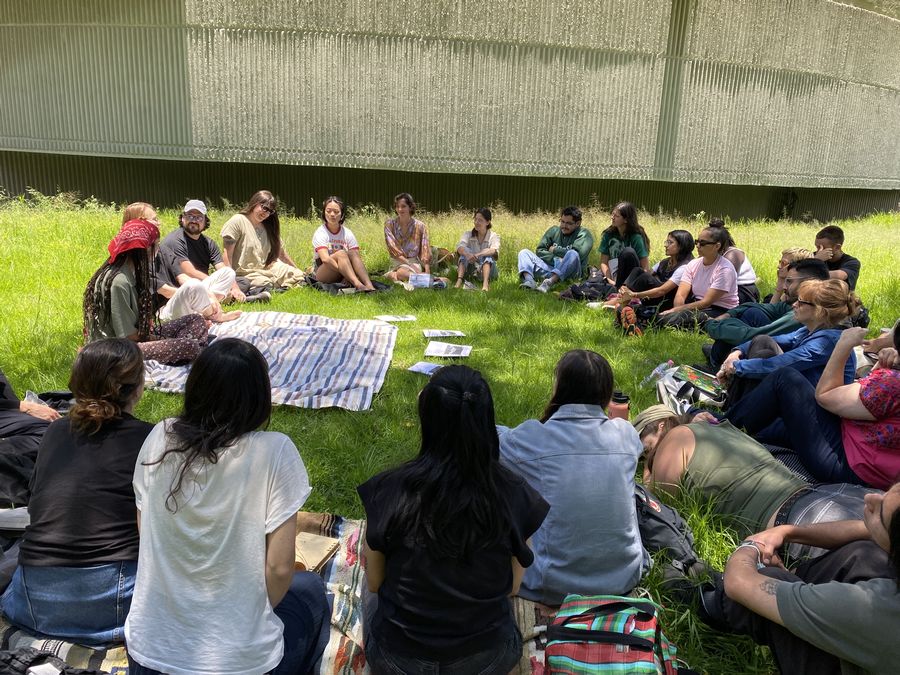
How have other ways of making worlds informed your curatorial practice and your understanding of different temporalities? In other words, how do you understand the contemporary or the concept of contemporaneity?
My approach to curating focuses on forms of research that question the methodology and timeframes on which much of the "contemporary" art production relies. For me, the critique of our contemporaneity is very important; that is something that the thinker Rolando Vázquez has been very influential in helping me understand. In his book The Vistas of Modernity, Vázquez proposes an analysis of the universal fairs, which is where he identifies the beginning of the consolidation of modern visuality and, therefore, the modern subject. A subject constituted by the very idea of otherness, racism, and colonialism as the systems that build and sustain such modernity. Moreover, it was in one of the installments of La escucha profunda [Deep Listening], organized in collaboration with the Laboratorio de Arte Alameda in Mexico City, where in a conversation with Rolando we had the opportunity to think about the "end" of the contemporary as the time of today, the time of now, which has always been fundamental for the construction of modernity.
Subcomandante Marcos also has a publication entitled La revuelta de la memoria [The Revolt of Memory] (1999), which gathers several of the communiqués in which EZLN develops an assertive critique of presentism as a regime of the now, through the disarticulation of time and western history. It has been from these places of temporal questioning that multiple alternative senses of reality to the modern time frame are unveiled. It is not a single time, and it is not a linear or ahistorical time either. Here, the experience of time has no sense of duration, and the future and the past dissolve into a continuous state of present capturing us once again, as Vázquez says, in the chronology of domination.
This critique makes a remark of tremendous violence, for time as a weapon focuses on the denial of other worlds through their oblivion. That is why "contemporaneity" as a time and as the concept modulating art today has to be dismantled, to give way to other visual paradigms that are more generative than the constant co-optation of other worlds into the one-world logic.
Together, ecocriticism and decolonial studies open up spaces for thinking critically about the regimes of historicity underlying the analysis and examination of history, art, and, of course, our 'contemporaneity.' At the height of their complexity, these theoretical frameworks embrace a critique of temporality that, for those of us engaged in contemporary art, has paradigmatically profound implications. And, there lies a power to think and relate, not only with Indigenous worlds but with the many other worlds that surround us and which constitute alternatives to the modern colonial world system. This is where other paradigms of time open up, where past-present-future relate from totally different positions beyond the linear, evolutionary construction of time based on progress.
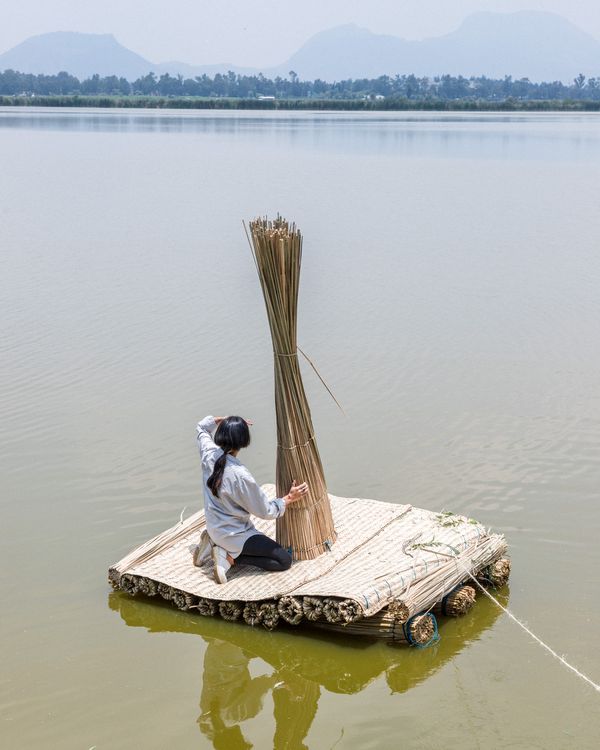
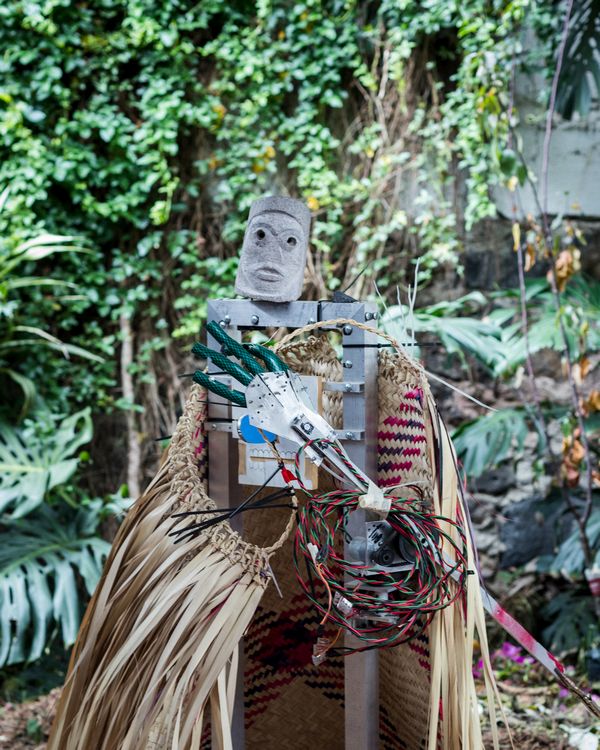
The power of art to transform or break open colonial and anthropocentric barriers to seeing lies in deconstructing the mechanisms of visuality that build and normalize a single way of being in the world.
Where do you see the potential of art as a tool to transform-break our colonial and anthropocentric barriers to seeing?
This is an enormous question. My "answer" is hereby partial and incomplete. I think that those of us who are intrigued by similar questions, pass through different moments of exploration and learning. At the moment, for me, art is one of the most important places for constructing meaning. Art is the practice, place, and medium in which the world is often asserted. The Western idea of art under which we operate is not only the product of colonial systems but, in my opinion, has also been a tool that has historically been complicit with the development and expansion of colonialism and its corollary: the Anthropocene. The power of art to transform or break open colonial and anthropocentric barriers of seeing, lies in deconstructing the mechanisms of visuality that build and normalize a single way of being in the world.
Especially, if we consider representation as artifice. By ‘artifice,’ I do not mean something false but the complex modulation between the real and its representation. When we recognize the degree to which these two are fully interrelated, the artistic sphere then acquires the potential to help us re-articulate this relationship. It could, for example, help us shift our obsession with representing the world, that is, with encapsulating and capturing the world as an image.
Listening to you reminded me of Eduardo Kohn's book How Forests Think, where he tells a story about encountering a jaguar. "Such encounters with other kinds of beings force us to recognize the fact that seeing, representing, and perhaps knowing, and even thinking, are not exclusively human affairs." How can we integrate other forms of intelligence into the construction of reality?
The experience we had in Materia Abierta with plant thinking is very much related to what you are saying. In the program, we asked ourselves how do we perceive plant intelligence and how then, could we better understand our own vegetality. Plants, as agents capable of representing the world, are also creators of reality. That is why we invited Michael Marder, who addressed these questions from a very political perspective and a radically corporeal-vegetable approach to the problem of the Anthropocene. Marder explained that we have this connection to plants precisely because we depend on them in ways beyond our use of vegetation. We are connected through digestive and metamorphic processes that enable our shared capacity to create and reproduce life.
On top of this, the writings of anthropologist Natasha Myers were pivotal in helping us understand that perhaps more so than a particular geological age, we are in what she calls the “Planthropocene.” This is not a geological era but an episteme: a way of understanding life. A moment in which vegetal epistemes help us stage new scenarios and new ways of seeing and sowing plant/people relationships. The reverse characterization of the problems that we are facing constituted an opportunity to entangle ourselves with other understandings of life allowing us to see the infinite possibilities of co-adaption and mutual flourishing that are possible when we don’t reproduce an anthropocenic logic.
Situated thinking is an exercise of unlearning. Curatorial practices, as the field dedicated to establishing certain conventions of seeing by fostering alternative forms of knowledge production cannot continue to reproduce ways of seeing the world as representation.
I believe that the concept of situated knowledge can also be a way of resisting this homogenization. This is a critical feminist epistemological position developed by Donna Haraway, which proposes that in order to talk about an object of study we must make evident the place-context from where it speaks since no knowledge is detached from the subjectivity of the one who issues it. This perspective proposes, in a way, dismantling the universality of knowledge. It has also given way to a series of interpretations that opens up the possibility of thinking with others—human and non-human—to root our practices into our places, into a purpose, to a path walked with other becomings... It has also prompted new critical postures regarding the theory of visuality, around what we understand by the real, etc.
Absolutely. For me, art today has the responsibility to care for, attend to, and even cultivate a multiplicity of ways of being that do not fall on the subject as the only standard in the construction of reality. In the words of philosopher Kelly Oliver, art as a practice, methodology, and construction of situated reality should be asking, among other things, how we can share the earth with those we don’t share the world?
I‘m talking about artistic mechanisms that establish other ways of understanding the world, not posed from the single sense of a disembodied mind, which denies its senses, denies its stories, and denies its partial and limited position of seeing the world. This relationship with the earth and the world as an object is even stressed by thinkers as varied as Rolando Vázquez or Kelly Oliver, who draw attention to the devastating consequences of denying other ways of living, other epistemologies, and ways of understanding and being with nature, and other ontologies besides those promulgated by Western modernity.
From that, situated thinking is an exercise of unlearning. Curatorial practices, as the field dedicated to establishing certain conventions of seeing by fostering alternative forms of knowledge production cannot continue to reproduce ways of seeing the world as representation.
For me, the world is not in crisis, it is rather broken, fragmented. My job as a curator is to perform tasks of care and maintenance, where we are oriented toward the idea—as you rightly quoted Steven Jackson—of a world in decay, breakdown, and erosion, of a world that is always and has always been in constant construction.
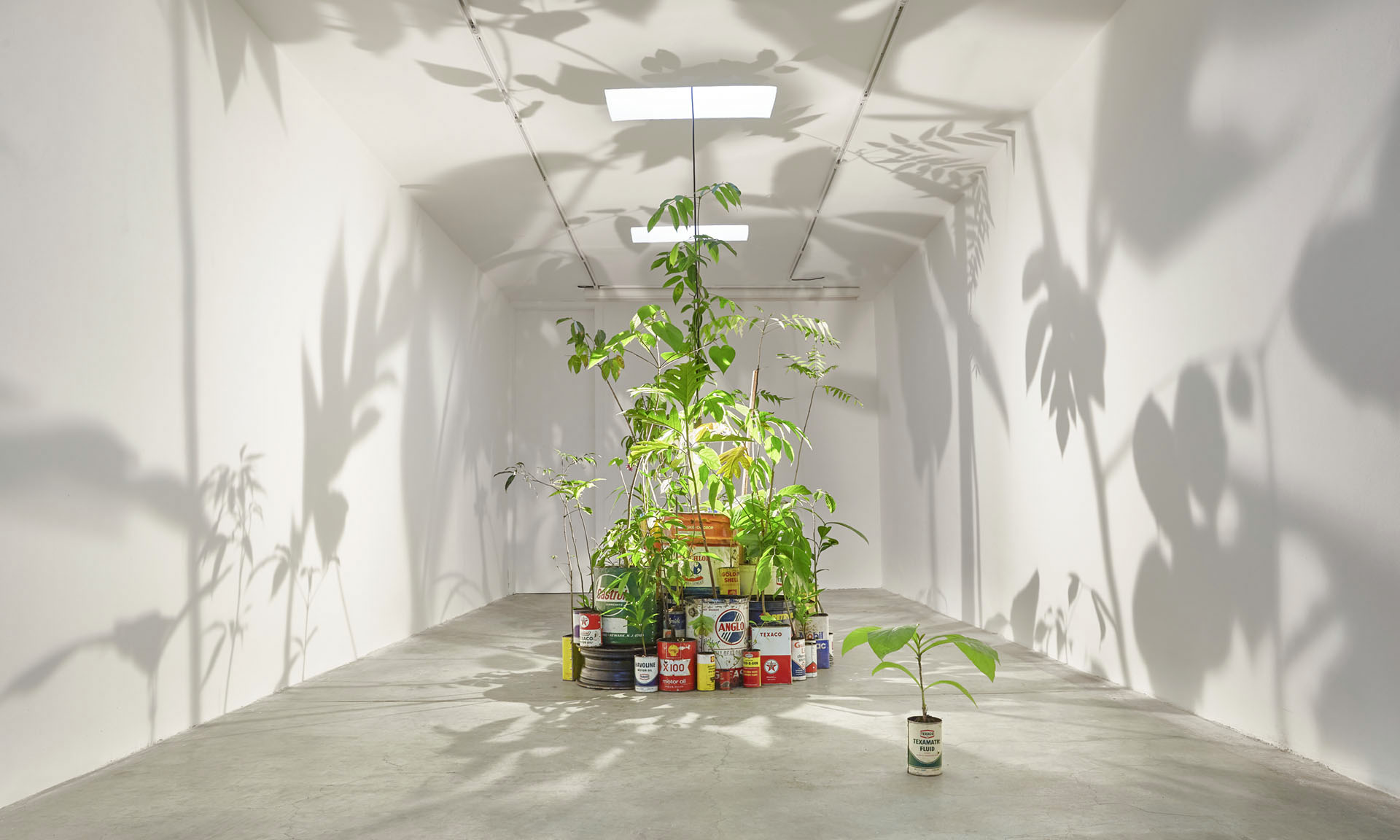
A few years ago, you created a platform called Collective Rewilding, whose main argument states: "Rewilding, in that sense, constitutes a methodology for a curatorial and artistic practice that helps us situate ourselves vis-à-vis each other, other-than-human beings, and our multiple yet disparate emergent social concerns." Do you think it is possible to orient curatorial practices towards a form of repair, our sharing of the earth, knowing, as you said, that we do not share the same world? How can we relate between different worlds without subjecting the earth to a single conformation of the world?
For Collective Rewilding, the question arises from the link with environmental concerns and because of the complicity that artistic practices and museums have had in building the hegemony of the one-world logic, and increasing the divisions between human and nature, culture and nature. Since art and its institutions have been accomplices in naturalizing these dualities as a universal ontology, we believe it is also their responsibility to repair these relationships.
Broken world thinking is an orientation that takes the fragility of the human and natural worlds around us seriously, foregrounding acts of rupture, maintenance, and repair as central elements of the human experience and collectivity in the world. For me, the world is not in crisis, it is rather broken, fragmented, and therefore my job as a curator is to perform tasks of care and maintenance, where we are oriented toward the idea—as you rightly quoted Steven Jackson—and to depart from decay, breakdown, and erosion as these allows us to better understand that the world is always and has always been in constant construction.
Jackson himself says that "the world is always breaking, it’s in its nature to break." In contrast to conservationist thinking, it is not about protecting nature, returning it to its supposed pristine state, but about understanding the natural world as something that is in a constant state becoming, always in transformation. So again, it’s a matter of changing the language we use to communicate, so that through Broken World Theories we can start orienting and situating ourselves in the world and generating systems for co-adaptation.
A small definition, “Broken world thinking is an orientation that takes the fragility of the human and natural worlds around us seriously, foregrounding acts of rupture, maintenance, and repair as central elements of the human experience and collectivity in the world.” This continues the thought of Anna Tsing, who elaborates on the concept of precarity as the uncertainty and vulnerability that defines our human condition today. And it is from there, from this shared sense of vulnerability and awareness of our limitations, from our partialities and our inability to control the world, that we must employ methodologies oriented toward repair.
In the context of Collective Rewilding, we define care as repair. Repair, for us, has to do with things that are not reused but repaired; it is about non-neoliberal forms of recycling. Our idea of repair is relational: to recover fragmented relationships is not to recover the world but the relationships we have lost with the world; it does not intend to repair communities as a whole but the relationships we have with the concept of community, to recover its ties. From this position, the curatorial practice, for me, has the responsibility of rethinking the methodologies of representation and subjecting art to intense scrutiny, to make sure that the art that we support as imaginative is at the service of repairing, re-situating and rethinking what it means to be in the world.
And to close, and at the same time open, tell us about your upcoming projects, the collaborations that are arising lately, and how you project your curatorial future.
Right now, I'm working in a new space in New York called Canal Projects. It's a place that I'm very excited about because it will allow me to think about curating from those experimental, pedagogical places, and also the possibility of expanding the exhibition-curatorial work to other geographies and ways of making and producing institutions that are rooted in other forms of orientation. The challenge is huge. I believe these practices that sound so coherent and urgent on paper, have very complex practical and logistical implications in reality. We are being very careful about putting the curatorial work at the service of that mission, to imagine other frameworks for institutional practice, where culture is not the place where racism, colonialism and exclusion are reinforced and naturalized.
